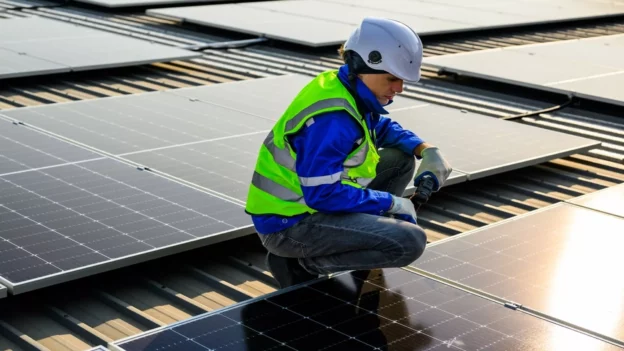With the launch of its latest 450 Wp solar module , Solarwatt is once again redefining solar industry standards. The Dresden-based company presents its latest innovation: solar modules equipped with advanced TOPCon cell technology , capable of reaching a maximum power of 450 watts peak (Wp). Previously, the power limit for commercially available modules was 445 Wp.
Advances in solar modules: efficiency and resistance
Additionally, Gregor Kuschmann, director of PM Panels at Solarwatt, highlights this launch as a milestone in the company’s progress and innovation. As he explains, “We are proud to have raised the standards of efficiency and durability with our TOPCon solar modules, demonstrating our commitment to excellence and constant innovation in our products and solutions.”
On the other hand, Solarwatt glass-glass modules, such as the Solarwatt Vision M 5.0 model, are available in Style, Black and Pure versions, each with a capacity of up to 450 Wp. These modules, in addition to their bifacial half-cell design, are distinguished by their robust 35 mm aluminum structure , designed to resist adverse weather conditions and mechanical stress.
Low carbon solar module
In addition to its outstanding efficiency, the new generation of Solarwatt solar modules is characterized by its minimal CO₂ emissions. Modern and sustainable production processes in facilities certified by TÜV Süd as carbon-free, have allowed the CO₂ footprint per TOPCon solar module to be less than 220 kg CO2eq, compared to the more than 600 kg of CO₂ generated by the production of a standard module.
“With these new TOPCon modules, we have managed to reduce our CO₂ footprint by almost two thirds,” says Kuschmann. In addition, he adds that these modules can offset more carbon dioxide than they require for their production in less than 15 months.
Innovation in solar module design and manufacturing is not only reflected in efficiency and sustainability, but also in ethical production practices. For example, Solarwatt ensures that 75% of the aluminum used in module frames comes from recycling , strengthening its commitment to the circular economy and environmental sustainability.
Follow us on social networks and don’t miss any of our publications!
Inspenet.com YouTube LinkedIn Facebook Instagram X
Source: elperiodicodelaenergia.com
Photo: Shutterstock

